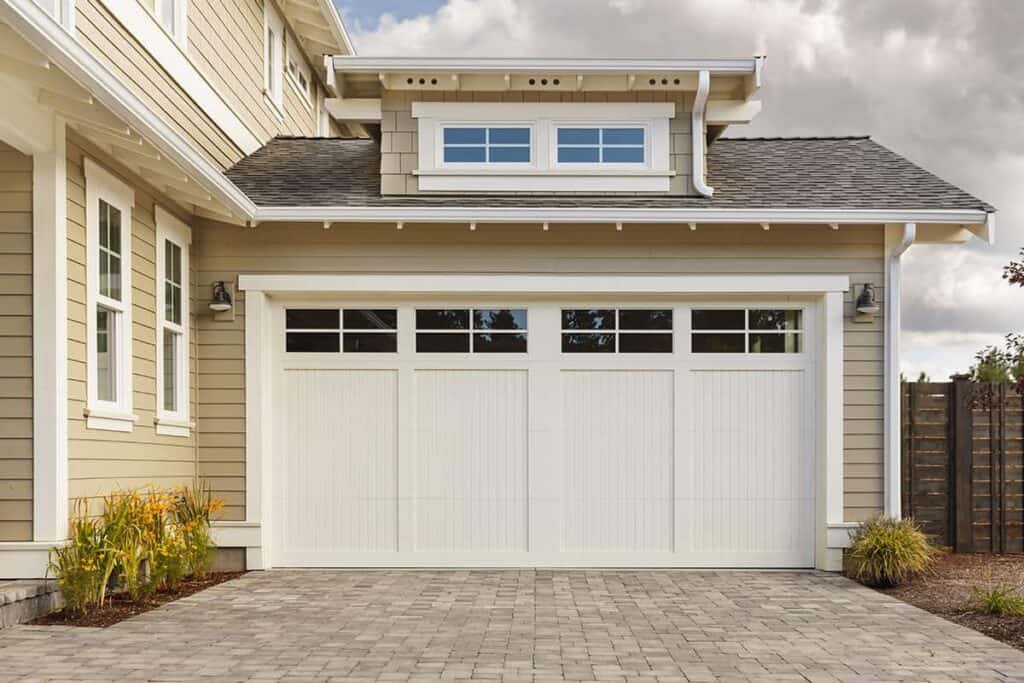Garage Door Repair North Richland Hills TX , also known as a wall mount garage door opener or a jackshaft opener, is a type of garage door opener that operates differently from traditional overhead garage door openers.

Instead of being mounted on the ceiling, a side mount opener is installed on the side wall of the garage beside the garage door. This unique positioning offers several advantages, including space-saving design, quiet operation, and enhanced security features. In this comprehensive guide, we will explore how a side mount garage door opener works, its components, installation process, and benefits.
Components of a Side Mount Garage Door Opener
Before delving into how a side mount garage door opener works, let’s first understand its key components:
- Motor Unit: The motor unit is the main component of the side mount garage door opener, responsible for powering the operation of the garage door.
- Drive Mechanism: The drive mechanism consists of gears, chains, or belts that transmit power from the motor unit to the garage door, allowing it to open and close smoothly.
- Trolley or Carriage: The trolley or carriage is attached to the garage door and moves along the track to open and close the door.
- Rail or Track: The rail or track is mounted on the side wall of the garage and provides a path for the trolley or carriage to travel along when opening and closing the door.
- Control Panel: The control panel allows users to operate the garage door opener manually, set programming options, and access additional features such as lighting controls and security settings.
- Remote Control: The remote control is a handheld device that sends signals to the garage door opener to open or close the door wirelessly.
How a Side Mount Garage Door Opener Works
1. Motor Activation
The operation of a side mount garage door opener begins when the motor unit receives a signal to open or close the garage door. This signal can be sent via the control panel mounted on the wall or through a remote control device.
2. Drive Mechanism Engagement
Upon receiving the signal, the motor unit engages the drive mechanism, which starts moving the trolley or carriage along the rail or track. The drive mechanism may use gears, chains, or belts to transfer power from the motor unit to the trolley.
3. Trolley Movement
As the drive mechanism moves the trolley along the rail or track, it pulls or pushes the garage door along its path, causing it to open or close accordingly. The trolley is connected to the garage door via a series of cables or chains, allowing it to move the door smoothly and evenly.
4. Door Operation
As the trolley moves along the rail, the garage door follows suit, either rising to open or descending to close. The speed and smoothness of the door operation depend on the quality of the drive mechanism and the condition of the garage door’s hardware.
5. Safety and Security Features
Side mount garage door openers are equipped with safety sensors that detect obstructions in the door’s path and automatically reverse its direction to prevent accidents or damage. Additionally, many side mount openers feature rolling code technology, which generates a new access code each time the door is operated, enhancing security and preventing code theft.
Installation Process
The installation of a side mount garage door opener typically involves the following steps:
- Mounting the Motor Unit: The motor unit is mounted on the side wall of the garage, either directly beside the garage door or in a designated location specified by the manufacturer.
- Installing the Rail or Track: The rail or track is mounted horizontally along the side wall of the garage, providing a path for the trolley to travel along when opening and closing the door.
- Attaching the Trolley: The trolley is attached to the garage door via cables or chains, allowing it to move the door along its path when activated.
- Connecting the Drive Mechanism: The drive mechanism, which may consist of gears, chains, or belts, is connected to the motor unit and the trolley, transferring power from the motor to the garage door.
- Programming and Testing: Once the installation is complete, the garage door opener is programmed to operate with the control panel and remote control devices. The system is then tested to ensure proper operation and safety features are functioning correctly.
Benefits of a Side Mount Garage Door Opener
Side mount garage door openers offer several benefits compared to traditional overhead garage door openers:
- Space-Saving Design: Side mount openers are mounted on the side wall of the garage, freeing up ceiling space for storage or other purposes.
- Quiet Operation: Side mount openers operate quietly, making them ideal for garages located beneath living spaces or attached to bedrooms.
- Enhanced Security: Many side mount openers feature advanced security features, such as rolling code technology and motion sensors, to prevent unauthorized access and enhance home security.
- Easy Installation: Side mount garage door openers are relatively easy to install and require minimal ceiling clearance, making them suitable for garages with low ceilings or limited space.
Conclusion:
A side mount garage door opener operates by mounting the motor unit on the side wall of the garage and using a drive mechanism to move the trolley along a rail or track, which in turn opens and closes the garage door. This design offers several benefits, including space-saving installation, quiet operation, and enhanced security features. By understanding how a side mount garage door opener works and its components, homeowners can make informed decisions about garage door opener installation and maintenance.
Tarrant County Door & Gate
6408 Marlette Ct, North Richland Hills, TX 76182, United States
91-817-456-2958








